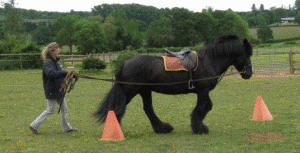Training a Young Horse to Carriage Drive – Part 1
How to train a young horse to carriage drive
By Eniola Odurinde. Special thanks to Kay Walton for her help and technical advise on this article.

Carriage driving is fun!!! You can have lots of fun with a carriage horse, drives, rallies, shows, training days, there is a long list of things you can do.whether you just want to brush up on theory or have several years driving experience and want to break a young horse to drive, this article will take you through the basics.
If you have a four year old that has been broken to ride but you also want to drive him/ her, you can send him away to be broken. If you prefer to do it yourself and live in the excitement you must have at least three years of competent practical experience, with regular lessons from a qualified instructor. If you are doing this for the first time, it is strongly advised that you work together with an experienced driver and horse person because a novice horse driven by a novice driver is often a troublesome and difficult combination.
The first step to teeaching a young horse is to long rein him. Long reining is where you stand behind a horse close enough to control him, but not close enough to get kicked, holding two long lines. Long reining teaches the horse to respond to rein and voice aids. If you do not have experience in long reining, it is vital for your safety as well as that of your horses that you practice with an experienced driving horse first.
Commands for long reining
Walk on: To walk, trot on: To trot, steady:… to slow down, whooa…: to halt and stand: To stop. Back: Or come back or go back to perform rein back.
The next step is to introduce driving harness. With calm quiet horses all of the harness can be put on at once ( excluding blinkers as these can be very scary) but the tail strap should be done up slowly. Once the horse is used to the harness it is time to introduce the driving bridle. The blinkers will be the scariest part but if the horse never accepts them it is possible to drive without blinkers.
A horse in blinkers should NEVER be left unnatended.
You can read part two of this article here.



Recent Comments